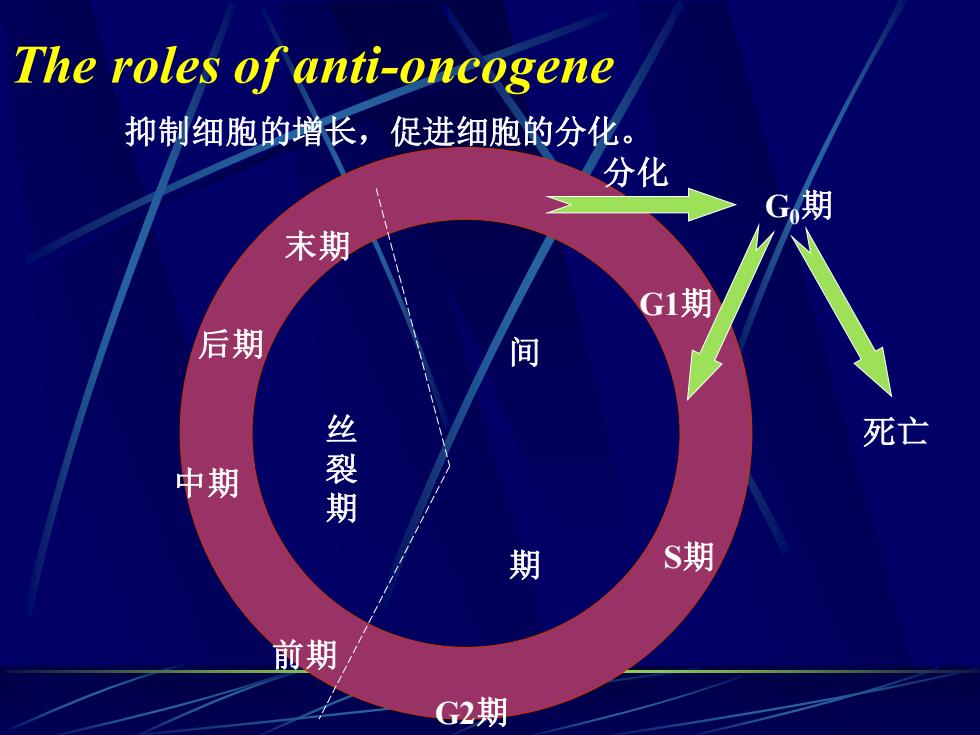
The roles of anti-oncogene 抑制细胞的增长,促进细胞的分 分比 G期 末期 G1期 后期 间 中期 丝裂期 死亡 期 S期 前期 G2期
抑制细胞的增长,促进细胞的分化。 G1期 前期 G2期 S期 丝 裂 期 中期 后期 末期 间 期 G0期 分化 死亡 The roles of anti-oncogene
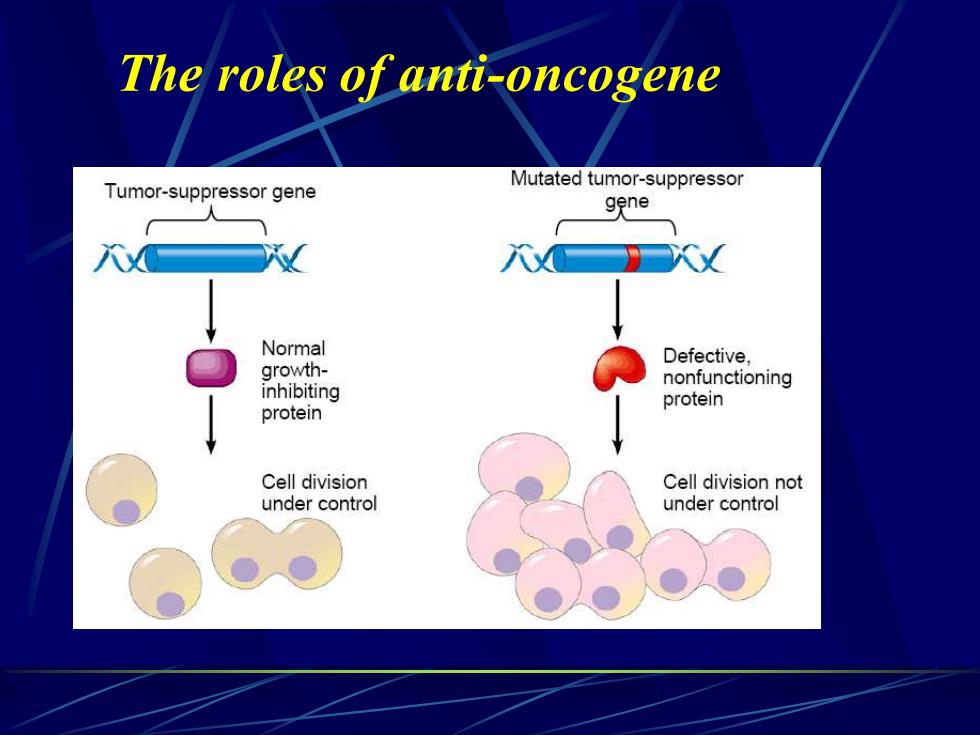
The roles of anti-oncogene Tumor-suppressor gene Mutated tumor-suppressor gene Normal Defective, growth- inhibiting nonfunctioning protein protein Cell division Cell division not under control under control
The roles of anti-oncogene
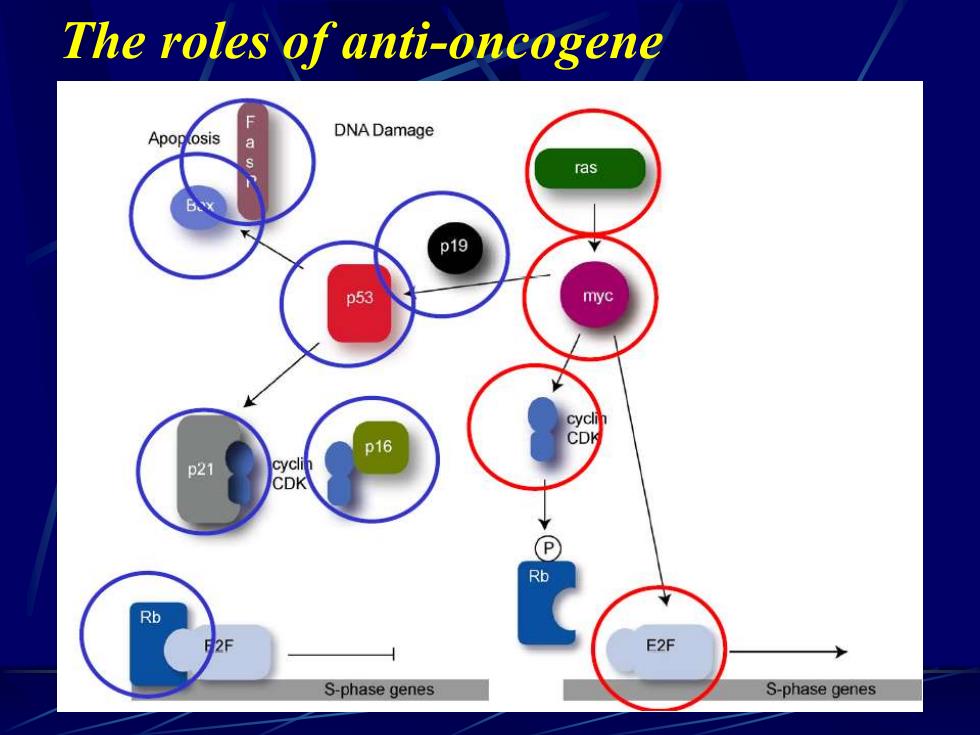
The roles of anti-oncogene DNADamage ras p19 p53 myc cyclin p16 CDK p21 cyc CDK Rb Rb E2F S-phase genes S-phase genes
The roles of anti-oncogene
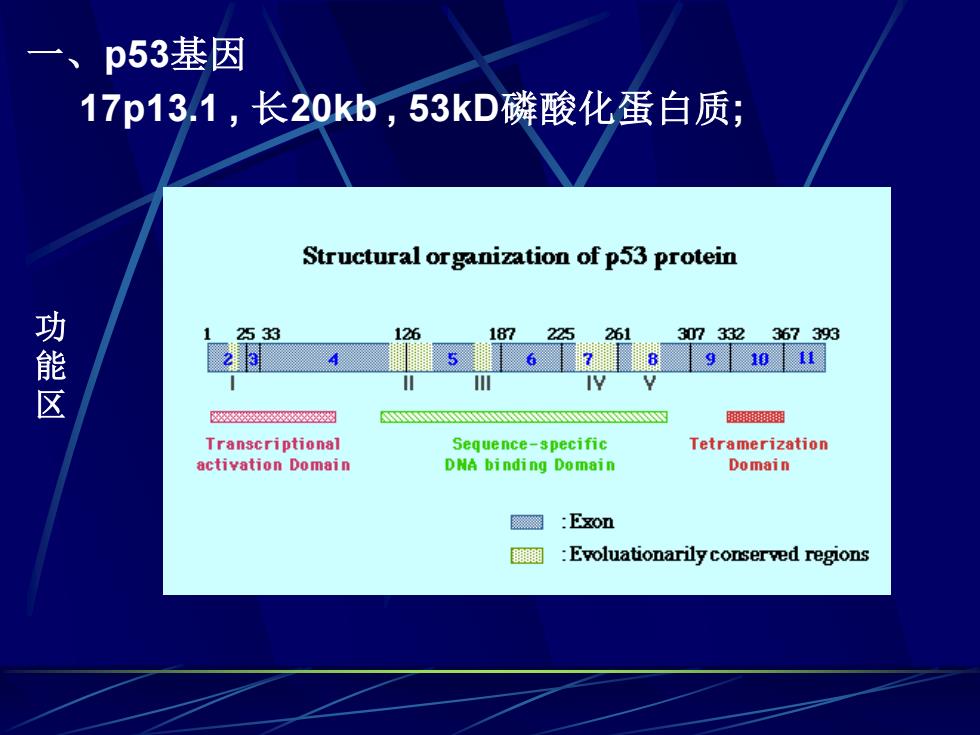
一、 p53基因 17p13.1,长20kb,53kD磷酸化蛋白质; Structural organization of p53 protein 功能区 1 2533 187 225 261 307332367393 24 7891011 1V 图 翻 Transcriptional Sequence-specific Tetramerization activation Domain DNA binding Domain Domain Exon 乳 Evoluationarily conserved regions
一、p53基因 17p13.1 , 长20kb , 53kD磷酸化蛋白质; 功 能 区
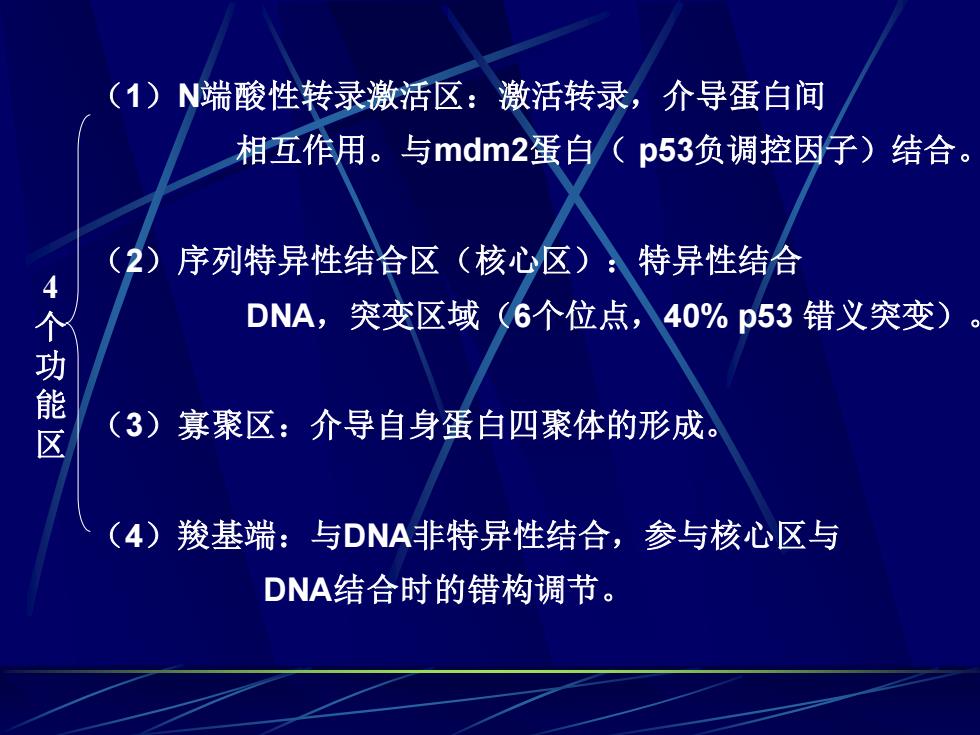
(1)N端酸性转录激活区:激活转录,介导蛋白间 相互作用。与mdm2蛋白(p53负调控因子)结合。 (2)序列特异性结合区(核心区): 特异性结合 DNA,突变区域(6个位点,40%p53错义突变) 功能区 (3)寡聚区:介导自身蛋白四聚体的形成。 (4)羧基端:与DNA非特异性结合,参与核心区与 DNA结合时的错构调节
(1)N端酸性转录激活区:激活转录,介导蛋白间 相互作用。与mdm2蛋白( p53负调控因子)结合。 (2)序列特异性结合区(核心区):特异性结合 DNA,突变区域(6个位点,40% p53 错义突变)。 (3)寡聚区:介导自身蛋白四聚体的形成。 (4)羧基端:与DNA非特异性结合,参与核心区与 DNA结合时的错构调节。 4 个 功 能 区